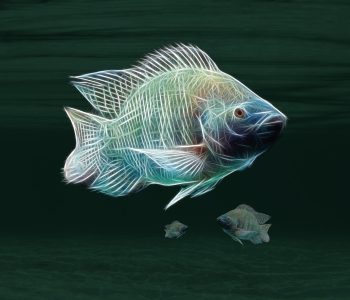Use of prebiotics, probiotics and synbiotics as a nutritional tool in aquaculture.
Additives that contribute to enhancing fish metabolism and health, promoting a satisfactory development of the animal, represent a valuable tool. As these can positively influence growth, reproduction and overall performance parameters.
Aquaculture requires adequate water resources, where fish or other species of productive interest will remain throughout their cultivation period. Thus, disease proliferation or any other distortion that may affect productive equilibrium can lead to negative impacts within the rearing environment. Resulting in important economic losses for the sector.
- In addition, residues from these compounds remain in fish tissues for considerable periods of time. Allowing them to reach consumers, as well as promoting imbalances in the beneficial biota of aquatic environments.
Faced with these undesirable implications, there is a growing need to find alternative dietary supplements for fish. Amongst which the use of probiotics, prebiotics and synbiotics represent a promising alternative. These types of products possess the ability to stimulate animal’s immune function by nourishing and promoting the growth of beneficial microorganisms. Which in turn are capable of enhancing the host’s metabolism through production of certain metabolites as well as inhibiting the proliferation of pathogenic microorganisms.
Although the names of these additives are quite similar, these differ in terms of their function. Therefore, it is important to understand their effects and how they may influence productive results according to the product chosen by the producer.
Prebiotics are compounds which are not digestible by enzymes. These include acids and salts produced in metabolic processes, but more specifically fermented by microorganisms of the gastrointestinal tract.
Therefore, prebiotics contribute to maintaining microorganisms of interest. In addition, they can also act as adsorbents, adhering to mycotoxins found in feed. Eliminating them from the gastrointestinal tract before these are absorbed by intestinal villi. These compounds can be present directly in diets or they can be included as dietary supplements.
Probiotics are living microorganisms that confer health benefits in host metabolism, when administered in quantities adjusted to each species. They provide such benefits by enhancing a balanced microbiota, thus promoting and improvement in nutrient digestibility. Leading to optimized nutritional use, and increased immunity. Providing a better response towards pathogens and other types of health hazards.
There are also synergistic combinations between these components, which are known as symbiotics. Which are composed by a mixture of prebiotics and probiotics, providing the benefits of both types of products. Mainly due to the synergistic effects that occur between them. The latter product has been used in aquaculture with promising results. Providing health benefits to fish and even having a beneficial impact on water quality.
The major impacts associated with the use of probiotics and prebiotics in aquaculture include:
- Improving overall animal health: fish respond better towards handling and when feed is offered to them. Demonstrating greater vigor and resilience.
- The maintenance of beneficial microbiota: favors the survival and maintenance of beneficial bacteria within the gastrointestinal tract. Protecting intestinal villi from potential injuries and improving intestinal function.
- Higher feed conversion efficiency and optimized nutrient absorption: the preservation of intestinal villi, and enhanced nutritional use, lead to improvements in zootechnical performance.
The use of Bacillus licheniformis is an example of a well established probiotic in fish farming. These have been included as probiotic complexes, withe purpose of promoting health and overall resistance in tilapia. Exhibiting an increase in intestinal villi height, which increases the area of absorption, as well as a greater area and volume in the nuclei of liver cells, These changes are considered as good indicators of fish nutritional status. As the liver is responsible for nutrient metabolism and the volume of its cells, correlates to the fish’s overall health status. Therefore, modifications within this vital organ, such as adaptations, injury or cell death are very significant.
In this case, the use of probiotic and prebiotic additives contributes to improving animal health and well-being in systems under constant challenges(low temperatures in certain times of year, pathogen exposure, etc.)
- Mannan oligosaccharides(MOS) are one of the most widely used prebiotic in animal diets. This compound is derived from the cell wall of Saccharomyces cerevisiae, a type of yeast that when combined with other components can benefit animal feed conversion rates and protein efficiency. Contributing to optimizing nutrient use and overall performance.
It is worth highlighting that the microorganisms used as probiotics or prebiotics in aquaculture must be safe from a sanitary standpoint for all the parts involved within the productive chain. Including the animals,the water, the producers and consumers. Besides assuring the proper colonization and their maintenance within the digestive tract, in order for them to benefit the host, other characteristics need to be looked after in these microorganisms. Including the following conditions:
- They must be innocuous to water, humans and animals;
- They must not possess antibiotic resistance genes and have antimutagenic and anticancer properties;
- Resist feed production processes when they are inoculated;
- They must also be resistant to the action of digestive enzymes, in order to reach their target tissue(intestinal epithelium) without losing their properties;
- Possess sufficient durability to withstand standard storage times and transportation.
For such reasons, the use of probiotics and prebiotics in fish nutrition is highly recommended. Considering it a valuable tool that can be added to other important factors such as optimal management practices and genetic quality. Finally, it can also be said that the inclusion of these types of supplements can significantly contribute to safeguarding important antibiotic molecules in the long term.
You may also like to read: “Planning and management as a weapon for nutritional efficiency in fish farming.”
References available upon request.
[/register]
